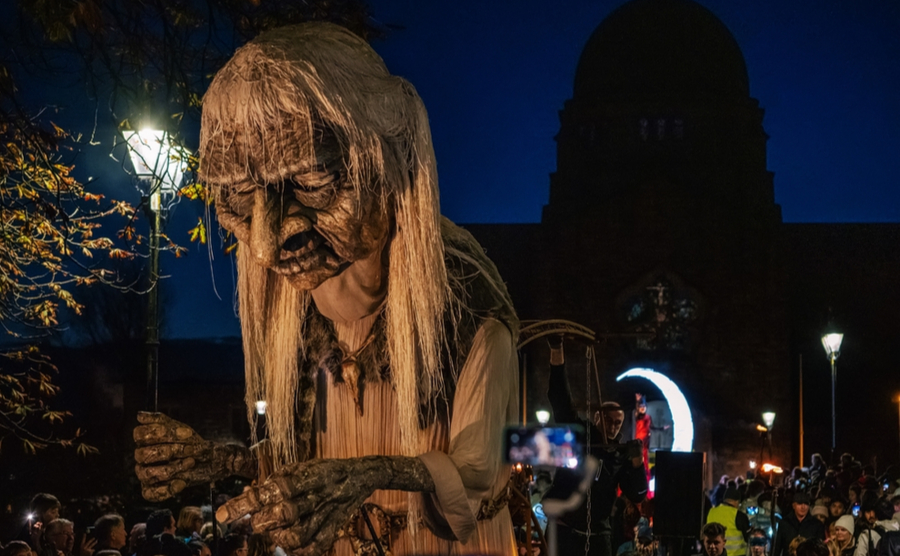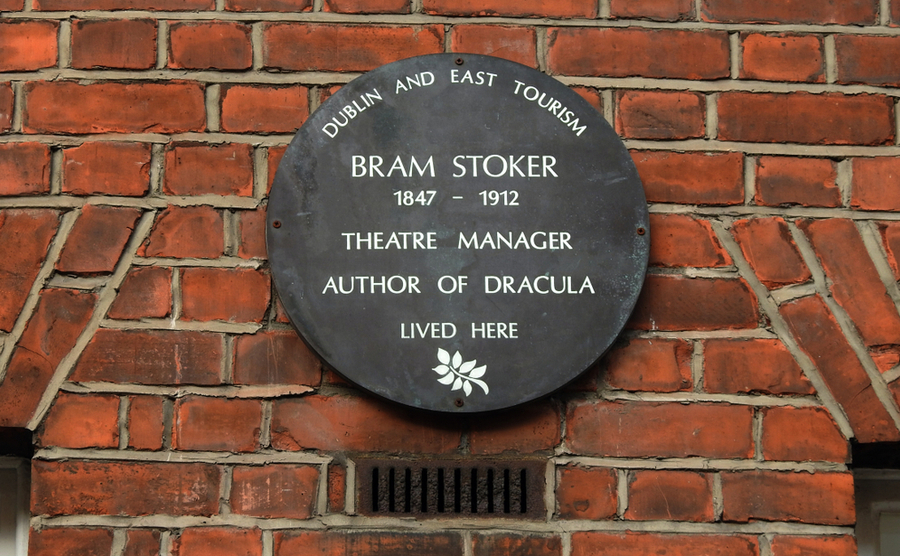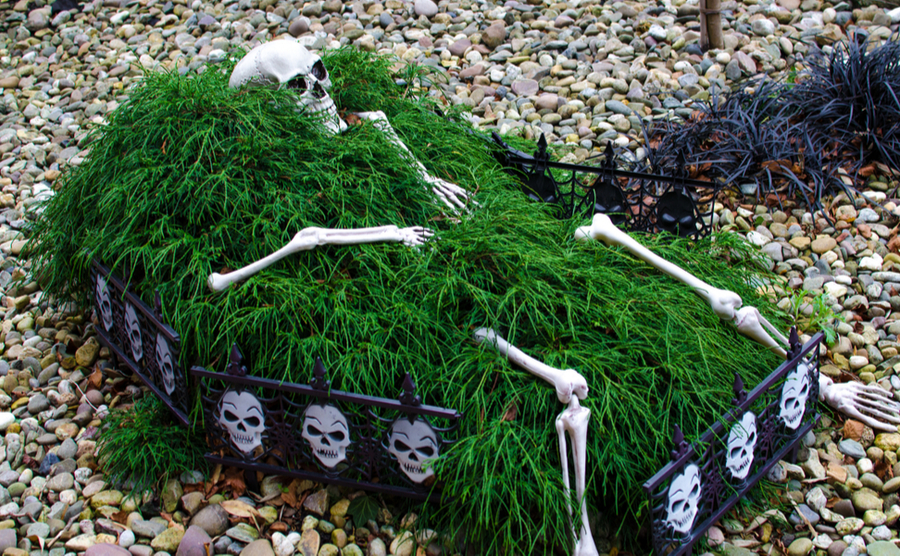If you love Halloween and feel that your inner spooky self doesn’t get to be truly unleashed in England, you will love a home in Ireland. The birthplace of Halloween, the country celebrates with scarily fantastic celebrations that last for days.

Galway, Ireland -29.10.2023: Scene at Macnas Halloween parade at Salmon Weir Bridge. Source: mark gusev/Shutterstock.
Samhain
Halloween can have the feel of a well-packaged American holiday of sweet treats, a playlist of spooky songs and a repertoire of horror films, but its origins can actually be traced back to the ancient Celtic festival of Samhain. Samhain marked the transition between the lighter and darker half of the year.
Held on November 1st, it was believed that this was when the division between this world and the other world was at its thinnest, allowing spirits to pass through. To avoid harmful spirits, people wore costumes to look just like them. In addition, sacrifices were made, often of crops or animals, to the gods, on bonfires. Samhain lasted for three days, and in that time, people played tricks on each other but blamed the spirits.
All Saint’s Day
In the year 609, King Pope Boniface IV declared the celebration of All Saint’s Day (also called All-Hallows Day in Middle English) in May. It was a day intended to commemorate the dead. In the eighth century, the day was pushed to coincide with that of Samhain. And the connections did not end there. Bonfires, costumes, and the presence of the otherworld all became part of the celebrations. As did tricks. While sacrifices evolved into treats.
Derry Halloween
Today, Ireland has come to embrace Halloween and the legacy of Samhain whole-heartedly. Derry, the second largest city in Northern Ireland, is a focal point of celebration. It hosts the largest Halloween festival in all of Europe. Derry is home to the longest and most complete set of ancient walls in Ireland, making it the perfect setting to evoke this ancient Celtic celebration.
Over a four-day period, over 100,000 visitors gather in Derry to mark the occasion. The event has a serious benefit to the local economy, with hotels packed full of ghosts, witches and vampires.
For three nights, the spirits arise for the Awakening the Walled City Trail, a journey through the City of Bones, where you will encounter all sorts of odd characters, music, pyrotechnics, and illumination. Plus, there’s a Trick or Treat Trail starting at the Tower Museum. Here, fancy dress isn’t a case of popping on a witch hat that been stuffed at the bottom of a cupboard: here, dressing up is taken seriously. Both by the young and the old.
The most serious and spookiest event is the Festival Finale, held on Halloween night. It features a parade where hundreds of local circus performers, dance troupes, musicians, fire jugglers and impressive puppets of terrifying creatures.
This year saw the biggest numbers since before the pandemic. For the first time, as well as an amazing firework display, there was a drone display that took place over the River Foyle. The drones formed images such as a ghost, witch and a raven in the night sky.
Bram Stoker Festival

Outside the former home of Dracula author Bram Stoker on 30 Kildare Street, Dublin city centre. Source: Derick P. Hudson/Shutterstock.
Dublin was the birthplace of Bram Stoker, who wrote Dracula (1897). For the last decade, Dublin has had its own late October festival to celebrate all things Stoker, Victorian, after-dark and the Gothic. The festival has featured outdoor circus acts at night, fire gardens and Macnas Parade.
Horror Week at the Drive-in
If your ideal Halloween is less being outside in spooky costume and more watching horror film after horror film until no jump scare could phase you, you might be keen for some bone chilling cinema. In Belfast, you can park up, with a pizza and popcorn, and prepare to be petrified. From October 20th to November 2nd, you can watch Hocus Pocus, Annabelle, Scream, The Shining and more.
Other terrifyingly fun Halloween events include: Macnas Halloween Parade in Galway; Farmphobia, home to Clown Town and Zombie Morgue; and the Nightmare Parade in Dublin, a series of scary mazes.
Plus, find out how the evolution of Halloween in France here.
You might also enjoy:








